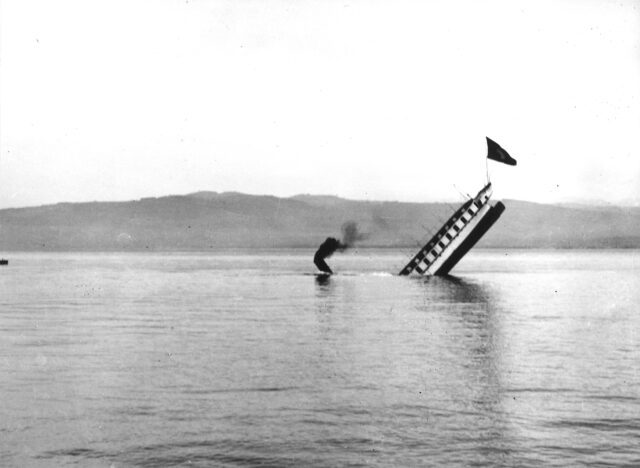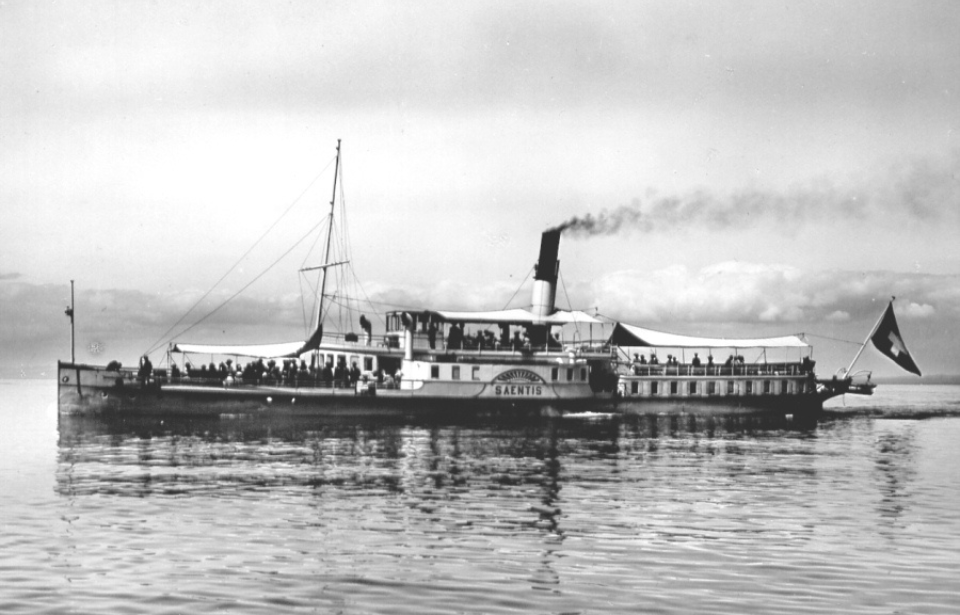Before the sinking of the Titanic, there was a steamship that shared many characteristics with that of the famous ocean liner. While it wouldn’t earn the nickname of the ‘Titanic of the Alps’ until after the Titanic’s sinking in April 1912, the Säntis has long been remembered as such. Now, the wrecked ship is slotted to be brought back to the surface.
The history of the Säntis

When it was operational, the 157-foot steamship Säntis served as a ferry for passengers traveling around Lake Constance. It did this job for 40 years, carrying up to 400 passengers at a time as it made its trips back and forth across the lake. However, the decision was made to convert the engines of the ship from coal to oil, and it was this decision that ultimately decided the fate of the Säntis.
Around the same time the engines were switched, the area experienced an economic downturn. The Säntis became inoperable, and scraping the vessel proved to be too expensive, so its owners at the Swiss Lake Constance Shipping Company decided to scuttle the ship. After the useful materials were removed from the ship, it was taken to the middle of the lake in 1933, where it sank to the lakebed about 690 feet down. There it lay for decades, largely forgotten until it was rediscovered in 2013 following an underwater survey at the lake.
Similarities to the Titanic

The Säntis has been nicknamed the ‘Titanic of the Alps’ as it shares many similarities with the famous ocean liner. Silvan Paganini, president of the Ship Salvage Association (SSA), explained some of their similarities, saying, “The steamship Säntis has a three-cylinder steam engine like the Titanic. A three-cylinder steam engine is very rare, so that is one of the similarities from a technical aspect.”
The Säntis also sank in a similar way to the Titanic. Like the ocean liner, “The stern went into the air with the flag flying high,” Paganini said. Like the Titanic, water rushed into the Säntis as the ship’s stern raised vertically until it ultimately sank down under the surface.
However, the two ships are different in many ways. For starters, the Säntis was intentionally sunk, whereas the Titanic‘s sinking was the result of a tragic accident. The Säntis was also commissioned 20 years prior to the sinking of the Titanic, making it older than the ocean liner. The Säntis also sits at a depth of just 690 feet, whereas the Titanic sits some 12,000 feet below the surface. And unlike the Titanic, the Säntis is going to resurface.
Threats to the ship and raising it
The Titanic of the Alps will rise again! pic.twitter.com/X96Huxskby
— Pen News (@pennewsagency) February 8, 2024
The dark waters of the mountainous lake, as well as the lack of oxygen at that sea level, helped preserve the ship in remarkable condition. When divers plunged into the lake to see the ship, it was so well-preserved that the original paint was still visible, bearing the easily legible name of the ship. The SSA has purchased the Säntis and intends to bring it to the surface to be put on display.
You may be wondering how they are going to achieve such a feat. Well, Paganini said that, “The cheapest solution is lifting bags. They’re like balloons which work underwater, you fill them with air and then they lift.” The first lift is expected to bring the ship up to a depth of just 40 feet, with a second lift taking place later to bring it to the surface. Following its resurfacing, the Säntis will be renovated at the nearby shipyard in Romanshore, where it had previously been renovated in 1898.
However, time is of the essence for the Säntis, as an invasive species known as Quagga mussels threatens to ruin the shipwreck. First found in 2016, the Quagga have become the “dominating species” on the lakebed, raising concerns that they may cover the Säntis in a thick layer. Quagga have already been spotted on the ship’s chimney, meaning the SSA needs to act fast before the mussels continue to spread.
Read more: Missing Shipwreck That Claimed Captain’s Life Found Discovered In Lake Superior After 74 Years
“We want to present to the public what we have here; what a monument we have from our predecessors,” Paganini said. “That is the main goal.”
